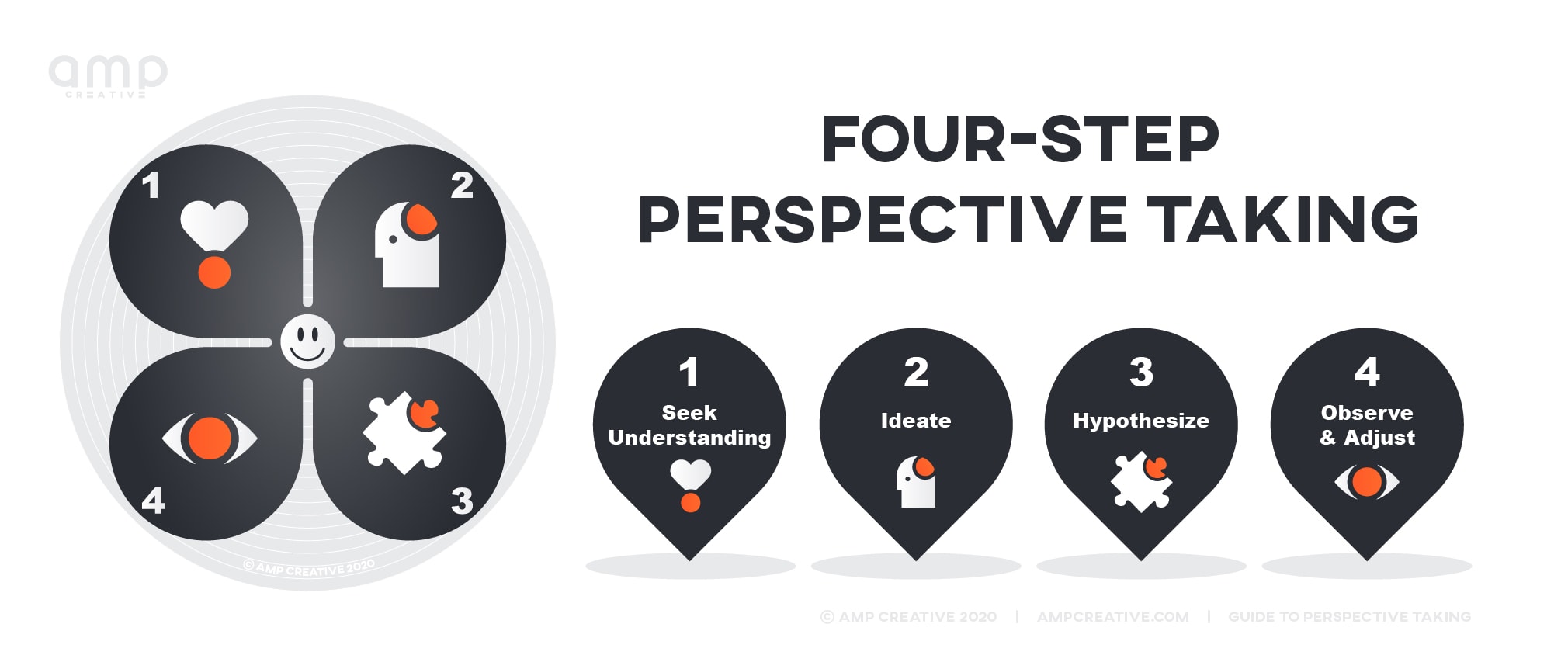Perspective Taking: Why Now?
The moment is tense, and baffling. You look at each other with surprise, hurt, and disappointment. How did this misunderstanding occur? How did you end up at such cross-purposes? What planet is this person from, anyway?!?
Unfortunately, some of us have found ourselves in this situation. Maybe it occurred over a video call with a colleague, in a Zoom with family, or during a recent shelter-in-place moment in your household.
From the Covid-19 pandemic to the Black Lives Matter movement, 2020 has been a challenging year. But these challenges have some people on the path to learning about, advocating for, and standing with perspectives that are not their own. Others are standing in opposition, holding opposing viewpoints that are dividing our country and pitting groups against each other. What causes some people to seek consensus, understanding, and collaboration, while others become even more entrenched in the status quo? How might people, despite differences in experience, thought, and action, find common ground and build solutions that are mutually beneficial?
We need to learn how to understand the perspectives of others. Others view us differently than we view ourselves, and our shared circumstances don’t result in shared conclusions. However, our goals still have equal value. To understand this, we need to engage in perspective taking.

What is Perspective Taking?
It has been defined as:
“The ability to understand how a situation appears to another person and how that person is reacting cognitively and emotionally to the situation.”
– Gehlbach, 2004(2)
In other words, it’s the ability to put ourselves in the place of someone else while recognizing their point of view, experience, and beliefs. This recognition creates the basis of understanding between people. There is no way to perfectly take the perspective of another individual. However, the conscious attempt to understand another’s point of view can build new neural pathways, create real learning, and reshape interactions.
Imagine if in the situation above you were able to pause, take a deep breath, and try to imagine things from their point of view. Then, through understanding and effort, you could have a fruitful discussion instead of a heated argument. That is the power of perspective taking.
This is a skill that can be learned and practiced. Some of us find it easier to master than others, but it’s a technique that anyone can access at anytime, anywhere. However, we all have to overcome some common barriers—ourselves.
Your Brain’s Job Is Self-Protection
It is important to acknowledge that our brains are hardwired to egocentric anchoring and adjustment. In other words, the very organ we use to make sense of our world places us at the center of our world. It makes us the hero and gives others supporting roles. This phenomenon explains why we immediately refer to our own experiences, opinion, and perspective as our base point.
When we engage in perspective taking, we move away from this egocentric starting point in order to understand others.(1) It’s not easy–the process is gradual and requires hard work. The good news? With practice, our skills improve. As we reach positive outcomes, we become more and more motivated to put in the effort.
A Virtuous Circle
In order to start putting this skill to work, you need motivation. Learning the skill to take perspective means nothing if there is no propensity or intention to use it.(2) Cultivating the desire to strengthen your perspective-taking muscle lies in recognizing the importance of it.
Why is it important? What are its benefits? Why should I use it? At AMP Creative, we are hard-pressed for reasons NOT to use it, because all the research points to its benefits. Let’s take a look.
Why is Perspective Taking So Important?

- Counteracts expressions of bias (3)
- Decreases implicit bias (4)
- Reduces the expression and accessibility of social stereotypes (9)
- Increases the positivity of group-based judgments (9)
- Decreases in-group favoritism (9)
- Increases team creativity (5)
- Stabilizes marriages (6)
- Improves conflict resolution (7)
- Creates successful leaders (8)
…The list goes on.
From conflict resolution to creating meaningful connections and designing human-centered products, perspective taking is a valuable skill set.
How Do I Start?
A simple way to start using this practice in your daily life is by using the Four-step Perspective Taking technique by Amy Lou Abernethy. We recommend this because we use it at AMP Creative in our day-to-day work and in the perspective-taking workshops we create for our clients.
Practicing frequently will help you sharpen your skills. You can start by employing this process anytime you run into a design problem, team conflict, family misunderstanding, or other interpersonal issue.

This technique focuses on four points in the process:
- Seek understanding
- Ideate
- Hypothesize
- Observe and Adjust
You can learn more about this technique–and the four obstacles we all face in the process–in our Guide to Perspective Taking.
Working with a team? Once you cover the basics, you can practice perspective taking in your workplace using these team activities. Because your collaborators can give you real time feedback on your process, practicing with others is vital to growing this skill.
Bringing Perspective Taking to Your Workplace
This growing field of study offers great promise for the improvement of interpersonal relationships, workplace dynamics, and societies writ large. That’s why we at AMP Creative are pioneering the use of perspective taking in corporate L&D. We’re developing workshops, materials, and exercises so you can bring this skill to your corporate workforce.
Want to bring perspective taking to your organization? We’ll help you create a custom plan. Take your leadership, sales, or diversity and inclusion training to the next level–contact us about a hosting a perspective-taking workshop for your company.
Sources
- Epley, N., Keysar, B., Boven, L. V., & Gilovich, T. (2004). “Perspective taking as egocentric anchoring and adjustment.” Journal of Personality and Social Psychology, 87(3), 327-339. doi: 10.1037/0022-3514.87.3.327
- Gehlbach, H. (2004). “A new perspective on perspective taking: a multidimensional approach to conceptualizing an aptitude.” Educational Psychology Review, 16(3), 207-234.
- Todd, Andrew R., et al. “Perspective taking combats automatic expressions of racial bias.” Journal of personality and social psychology 100.6 (2011): 1027.
- Shih, Margaret, et al. “Perspective taking: Reducing prejudice towards general outgroups and specific individuals.” Group Processes & Intergroup Relations 12.5 (2009): 565-577.
- Hoever, Inga J., et al. “Fostering team creativity: perspective taking as key to unlocking diversity’s potential.” Journal of applied psychology 97.5 (2012): 982.
- Long, Edgar CJ. “Maintaining a Stable Marriage: Perspective Taking as a Predictor or a Propensity to Divorce.” Journal of divorce & remarriage 21.1-2 (1994): 121-138.
- Sessa, Valerie I. “Using perspective taking to manage conflict and affect in teams.” The Journal of applied behavioral science 32.1 (1996): 101-115.
- Galinsky, Adam D., et al. “Acceleration with steering: The synergistic benefits of combining power and perspective-taking.” Social Psychological and Personality Science 5.6 (2014): 627-635.
- Galinsky, A. D. & Moskowitz, G. B. (2000). “Perspective-taking: Decreasing stereotype expression, stereotype accessibility, and in-group favoritism.” Journal of Personality and Social Psychology, 78(4), 708-724. doi: 10.1037//0022-3514.78.4.708
















